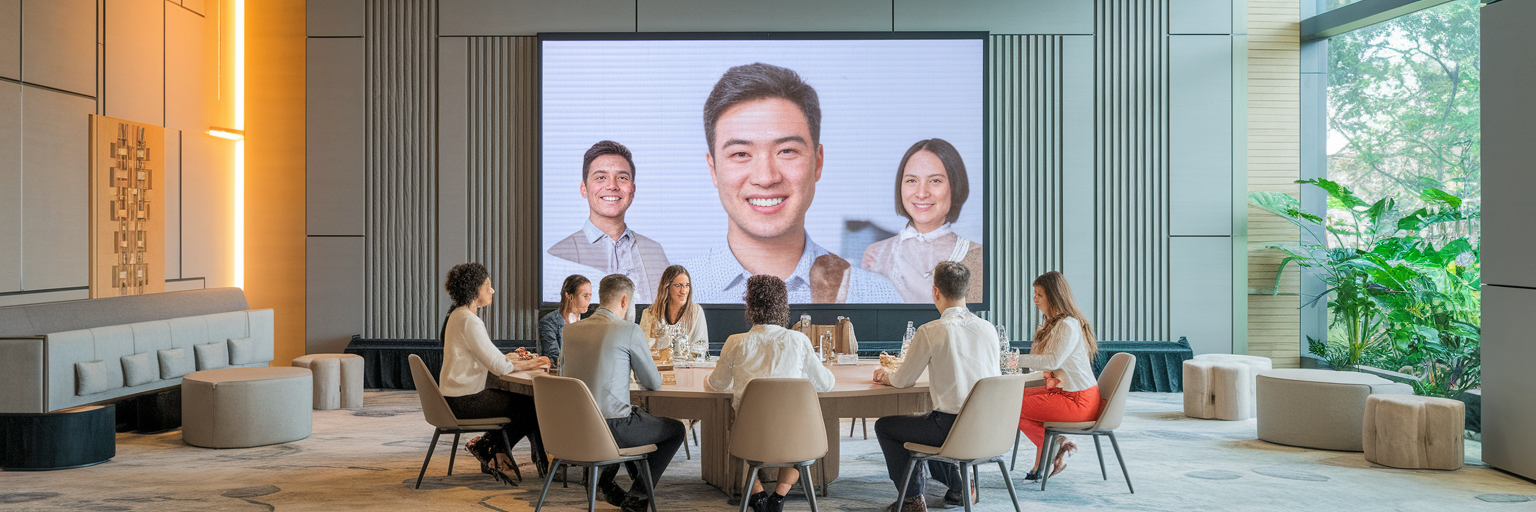How to Host Inclusive Incentive Travel Events in Kuala Lumpur
Discover how to design truly equitable and memorable hybrid incentive trips for a diverse, global workforce in a vibrant destination.

Discover how to design truly equitable and memorable hybrid incentive trips for a diverse, global workforce in a vibrant destination.

Incentive travel has evolved. It is no longer just a trip but a reflection of a company’s commitment to its people. In a globalised workforce, that reflection must be one of genuine inclusivity. When planning a trip for a diverse team, especially in a multicultural hub like Kuala Lumpur, creating a truly inclusive experience means going far beyond basic physical access. It is about designing every moment to ensure each person feels seen, valued, and able to participate fully.
This deeper approach to inclusivity directly impacts morale and strengthens connections within a team. It is a tangible demonstration of a company's diversity, equity, and inclusion values. This requires an ‘Accessibility-First’ mindset, where diverse needs are anticipated from the very beginning, not treated as an afterthought. This philosophy is central to our mission, shaping how we approach every project. It is the difference between simply accommodating a need and proactively designing an environment where everyone belongs.
Kuala Lumpur, with its vibrant blend of Malay, Chinese, and Indian cultures, offers a rich canvas for these experiences. This cultural mosaic presents a unique opportunity for creating deeply inclusive themes. It also underscores why thoughtful MICE event planning in Asia is so essential. The goal is to build a program where the destination’s diversity enhances the event’s inclusivity, making the experience memorable for every single attendee.

With the foundation of inclusivity set, the focus shifts to execution. For hybrid incentive trips, the challenge is to create a single, unified experience rather than two separate ones. This begins with careful venue selection for both physical and virtual attendees. In Kuala Lumpur, a physical venue must offer more than just a great view; it needs practical features like wheelchair accessibility, designated prayer rooms, and quiet zones for neurodivergent guests. The virtual platform is just as critical, requiring technical capabilities like multi-language audio channels and screen reader compatibility to be truly accessible.
The real art lies in designing equitable engagement. Imagine a hybrid Malaysian cooking class. The traditional approach might have remote attendees passively watching a livestream. An inclusive model, however, sends a curated ingredient box to virtual participants so they can cook alongside their colleagues in Kuala Lumpur. This transforms a passive viewing into a shared sensory experience. Such activities are key to creating digital experiences with real emotional impact.
Bridging the two audiences requires dedicated hybrid event moderators. Their job is not just to manage technology but to be the voice for the virtual attendees, ensuring their questions are heard and they are actively pulled into discussions. This deliberate integration is what makes inclusive hybrid events Kuala Lumpur feel cohesive and connected, not disjointed.
| Activity Type | Traditional Approach (Passive Virtual) | Inclusive Hybrid Approach (Active Virtual) | Inclusivity Goal Achieved |
|---|---|---|---|
| Cultural Workshop (e.g., Batik Painting) | Virtual attendees watch a one-way live stream of the on-site workshop. | A second camera provides a close-up view for remote participants, who receive a craft kit in advance to follow along. A dedicated moderator facilitates their questions. | Equitable participation and shared creative experience. |
| Keynote Speaker Session | Virtual attendees can only use a text-based Q&A box at the end. | A virtual moderator actively pulls questions from the remote audience throughout the session and presents them to the speaker alongside in-person questions. | Equal voice and active contribution for all attendees. |
| Team-Building Challenge | Remote team members are grouped into a separate virtual-only breakout room. | Hybrid teams are formed, mixing in-person and virtual members who collaborate on a shared digital whiteboard or problem-solving task. | Breaks down physical barriers and fosters cross-locational collaboration. |
| Gala Dinner & Awards | A static camera is placed at the back of the room, offering a poor view and audio. | Multiple camera angles, including a roving camera, and a dedicated virtual host who interviews remote attendees and award winners. | Makes remote attendees feel seen, celebrated, and part of the main event. |
Note: This table illustrates the shift from passive observation to active participation for remote attendees, which is fundamental to creating a truly unified and equitable incentive travel experience.
For any multilingual incentive travel APAC program, communication is the bedrock of inclusion. A shared experience is impossible if attendees cannot understand the content or each other. This is where technology provides powerful corporate event accessibility solutions, moving beyond simple translation to create seamless understanding for everyone, everywhere.
Gone are the days of clunky on-site interpretation booths. Remote Simultaneous Interpretation (RSI) platforms allow professional interpreters to deliver real-time audio translation directly to attendees' smartphones or laptops, whether they are in the room or across the globe. As highlighted in a report from Interprefy, this approach offers significant cost and logistical benefits over traditional methods, making high-quality interpretation more feasible for a wider range of events.
Artificial intelligence offers incredible tools for real-time translation for corporate events, such as live captions on screen and instant translation in chat boxes. These are excellent for enhancing comprehension and facilitating informal conversations. However, it is important to maintain a balanced perspective. For high-stakes content like a CEO’s keynote or complex technical presentations, the nuance and cultural accuracy of a human interpreter remain irreplaceable. AI is a powerful supplement for scale, not a substitute for quality. Similarly, scalable tech platforms can optimize other event aspects, from attendee engagement to scalable affiliate marketing solutions for corporate events that can broaden an event's reach.
True accessibility considers all communication needs. This includes integrating sign language interpreters into the event, both on-site and via a dedicated video feed for virtual attendees. For an event in Kuala Lumpur, this would mean providing interpreters for Malaysian Sign Language (BIM). It also extends to visual design. All presentations should use high-contrast colours and large, clear fonts to support attendees with visual impairments. Proactive communication is the final piece. By translating all pre-event materials and using registration forms to discreetly ask about specific needs, you demonstrate a comprehensive commitment to inclusion, which is where professional event management proves its worth.

A truly modern incentive program creates a positive legacy, shifting from a simple reward to a meaningful engagement with the host community. This final layer of planning is what transforms a great trip into a purposeful one, deeply connecting attendees to the place and its people. It is a core component of forward-thinking MICE event planning in Asia.
Here are a few ways to weave sustainability and local culture into your Kuala Lumpur program:
By tying these threads together, the incentive trip becomes a powerful expression of corporate social responsibility. The company and its employees leave a positive, lasting impact on the host community, reinforcing brand values far more effectively than a conventional trip ever could. This purposeful approach is a key differentiator in the design of our bespoke event services.